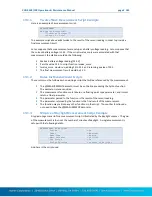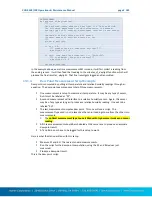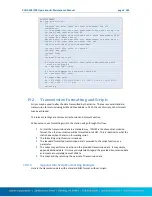
XLINK 500/100 Operations & Maintenance Manual page # 169
Multiple Modbus sensors may be connected to the RS-485 bus. However, each sensor must be
programmed with a unique Device ID. If the sensors do not have unique IDs, they will cause
collisions on the data bus, resulting in failures to collect sensor data. The station is NOT capable
of changing Device IDs. Please refer to the sensor’s documentation for information on how to
change their IDs.
Please note that the station does NOT have the ability to write Modbus registers.
18.2.
Modbus Hardware Interface
There are several interfaces that support Modbus communication:
RS-485
RS-232
Cell modem
The station may be a Modbus master or a Modbus slave over RS-485 and over RS-232. The
station may only be a Modbus slave over the cell modem.
Each interface can be setup independently of the other one. Each interface has its own setup.
This means that the station could be a Modbus master on RS-485 and a Modbus slave on Cell
modem at the same time.
18.2.1.
Wiring Modbus RS-485
The station has a half-duplex RS-485 interface. That means that the same lines are used for
sending and receiving data.
Only two lines need to be connected to use RS-485:
RS-485 A
RS-485 B
When wiring, connect the Modbus master's RS-485 A line to
the station’s
RS-485 A Line. Do the
same for RS-485 B.
18.2.2.
Wiring Modbus RS-232
When using RS-232 for Modbus communications, only three of the lines in the DB9 connector are
necessary:
TX
RX
Ground
The station will assert RTS before sending data out the port in order to key off a radio.
The station also drives DTR whenever Modbus is active.
18.2.3.
Troubleshooting Modbus
If there are Modbus communications issues over RS-485 or RS-232, there are two potential
causes:
The setup; Please make sure that
the stations’
Modbus setup is the same as that of the
master. These settings must match: Protocol, Device ID, Baudrate, Parity, and the two
Delay settings.
Wiring: Try reversing RS-485 A and B.
















































